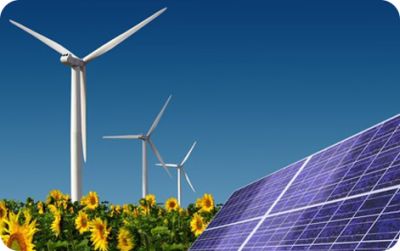Almost everybody is now aware of the fact that it is not too long before we run out of all forms of fossil fuels, and that seeking alternative sources of energy has become a matter of survival. While energy surrounds us in all aspects of life, the ability to harness and use it for constructive ends as economical as possible is the challenge facing mankind.
Alternative energy refers to energy sources which are not based on the burning of fossil fuels or the splitting of atoms. The renewed interest in this field of study emerges from the undesirable polluting effects of traditional energy sources. Fortunately, there are many means to harness energy which have less damaging impacts on our environment.
Solar energy is a highly promising source of energy for the future. One of the reasons for this is that the total energy we receive each year from the Sun is around 35,000 times the total energy needed for all sorts of human activities on Earth. However, about one-third of this energy is either absorbed by the outer atmosphere or reflected back into space. Nowadays, solar energy is used on either a small scale to operate furnaces in homes and to heat up swimming pools, or a large scale to run cars, power plants, and spaceships.

Wind power is another alternative to fossil fuels. It is plentiful, renewable, widely distributed and clean energy source. It produces no greenhouse gas emissions during operation and uses little land. A wind farm is a group of wind turbines in the same location used to produce electricity. A large wind farm may consist of several hundred individual wind turbines, and cover an extended area of hundreds of square kilometers. However, the land between the turbines may be used for agriculture or for other purposes. In Egypt, there is a powerful wind farm operating on hundreds of windmills in El-Zafarana district making a strong contribution in the national grid of electricity.
Tidal power is a form of hydropower that converts the energy of tides into useful forms of power—mainly electricity. Although not yet widely used, tidal power has potential for future electricity generation. Tides are more predictable than wind energy and solar power. Among sources of renewable energy, tidal power has been notorious for its relatively high cost and the limited availability of sites with sufficiently high tidal ranges or flow velocities, thus constricting its total availability. However, many recent technological developments and improvements, both in design and turbine technology, indicate that the total availability of tidal power may be much higher than previously assumed, and that economic and environmental costs may be brought down to competitive levels.
The previously mentioned are only three examples of the currently used sources of renewable energy. There are tens of other potential sources of alternative energy that are now subject to research and development.